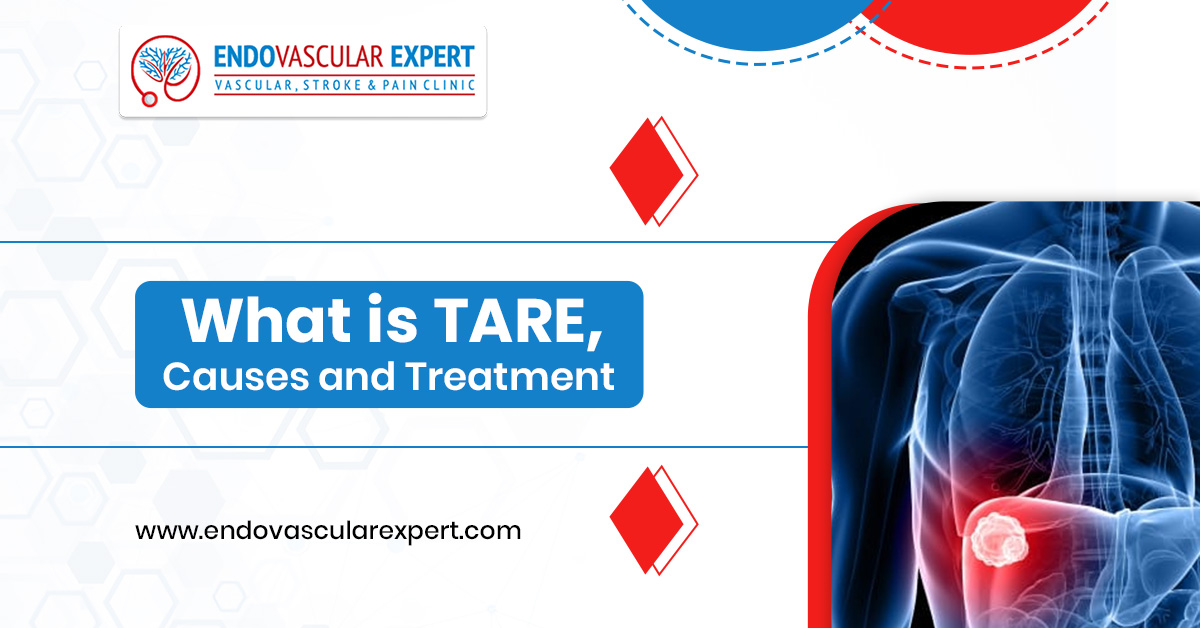Overview
Liver cancer has become one of the most common cancers worldwide in recent times. There are various treatments to treat liver cancer, and one of them is TARE (trans arterial radioembolization) to cure liver cancer. It’s a very effective technique, especially if surgery isn’t feasible. Tumors in the liver are notoriously challenging to treat due to their position, blood supply, and the state of the liver overall. Traditionals, such as surgery and chemotherapy, are not always suitable or successful. This is where TARE, a form of targeted therapy, enters the scene. It focuses the radiation directly into the tumor; moreover, it has less radiation, which means less damage to the healthy liver tissue.
In this blog, we are going to understand TARE in detail.
What is TARE?
The procedure is called TARE, for trans arterial radioembolization, and it is a minimally invasive technique for treating liver cancer. It entails injecting small radioactive beads — typically loaded with Yttrium-90 — into arteries that feed the blood flow to a tumor. This therapy is beneficial for those who can’t tolerate chemotherapy. It also puts radiation and embolization together in one shot, with the benefit of fewer side effects, better tumor control, and better quality of life.
Causes of TARE
TARE is not a disease it’s a treatment for a liver tumor. The need for TARE treatment arises when certain liver conditions and liver tumors do not respond to surgeries or other therapies. Below are the causes of TARE that lead to the treatment:
- Hepatocellular Carcinoma (HCC): It’s the most common liver cancer, which can lead to chronic liver disease. It often arises due to hepatitis B or C infection, and the second one is cirrhosis, which is caused by long-term alcohol use or fatty liver disease. Mostly, patients are diagnosed at an early stage when surgery is not possible, and then only the TARE treatment is considered.
- Metastatic Liver Cancer: This liver cancer spreads to other parts of the body, like the breast, lungs, pancreas, and colon. So when surgery is not possible, then consult a TARE Specialist in Jaipur is the only way to get rid of the cancer. It slows down cancer growth and improves your quality of life.
- Other causes of cancer: Sometimes tumors are located in other parts of the liver that are too risky to operate on, chemotherapy fails to shrink the cancer, or if the blood clot forms in the main vein that supplies the liver, then all these conditions are treated with TARE, which plays an important role.
Treatment of TARE:
Treatment of TARE is a minimally invasive procedure that delivers the radioactive beads directly to the liver through the blood vessels. So, here is a step-by-step process of TARE:
- Patient evaluation:
After joining the history and all-important details, your doctor does some tests to find out the size and location of the tumor, overall liver function, and blood flow. The test can be done through MRI or CT scan, and a radioactive substance can be given to check the blood flow to the liver.
- Pre-treatment:
Pre-treatment is done before starting the main procedure. In this, a thin tube catheter is inserted into the artery. In this doctor map, the blood vessels are also blocked if any small vessels lead to the organ to prevent radiation.
- TARE procedure (radioembolization):
This is the same mapping test. This catheter is again inserted into the artery and then guided to the liver. Then, radioactive beads, i.e., radioactive Y90 particles, are injected through the catheter inserted into a blood vessel that supplies blood to the tumor. Afterwards, these beads release radiation slowly and start to kill cancer cells while saving healthy tissue.
Recovery and monitoring
After the procedure, the patient is going to be observed in the hospital for a few hours or overnight. There can be some mild side effects like fatigue, mild fever, nausea, or abdominal discomfort.
Three months after the TARE treatment, some blood tests are done to check the efficiency of the treatment.
What are the benefits of the TARE treatment?
- It targeted the tumor treatment.
- Minimally invasive procedure
- It has fewer side effects.
- Can extend life and improve the quality of life
- Shorter hospital stays
- It can shrink the tumor before the surgery or transplant.
Final thoughts
Liver cancer can be cured if you make your decision deliberately. Additionally, it’s a therapy that kills cancer cells while saving healthy tissue. But when it is performed by the best Interventional Radiologist in Jaipur, Dr. Nikhil Bansal, then it can become a safe and effective option.


